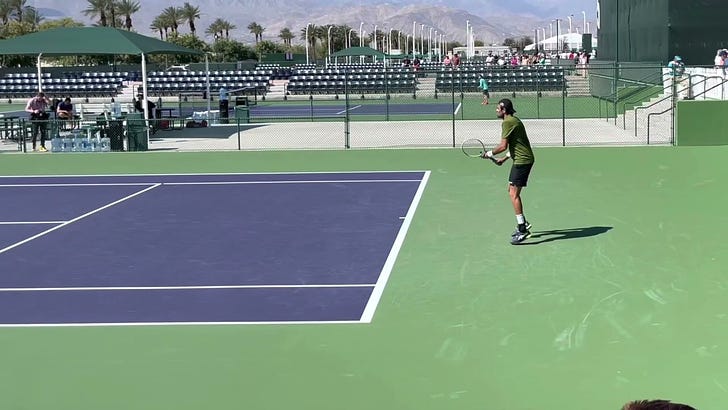It’s Masters week in the golfing world. I took an interest in the game after Tiger’s comeback win at Augusta in 2019, and learning the technical plumbing of a clean golf swing has influenced my thoughts on tennis in recent years as well.
Despite advances in equipment and training that have increased power in recent decades, tennis and golf are still about control. Adding power is only beneficial if it can be directed accurately. From a technical standpoint, both rely on an infuriatingly counter-intuitive application of the body; one that relies on the kinetic chain of bigger muscles to generate speed, whilst simultaneously trying to resist the human desire to affect the strike with distal joints like the wrist. The best swings are often the simplest from a biomechanical standpoint, yet simple swings are hard to attain; the technical ideal is an asymptote that few approach.
Tennis lends itself to more variation in technique by virtue of the fact that it incorporates more than one swing; a player can have a great forehand and an average backhand, but still be a great player (more on this player soon). Furthermore, the athletic component of the game—speed, agility, balance, and power—often makes up for deficiencies in technique. Unconventional serves, forehands, and backhands have graced the highest echelon of the sport, and while I am a proponent of the “swing your swing” mantra, technical limitations nearly always place a ceiling on a given shot’s potential, no matter how talented the player is. Still, many coaches—and I’m not saying they are wrong to do so—allow unconventional strokes to develop, leaving a player with a chink in their armour that is very difficult to change after years of ingrained training. Motor patterns gonna pattern. Matteo Berrettini’s backhand fits the bill; the big-serving Italian is about six inches away from grand slam success, and I’m not talking about the space between his ears. Specifically, Berrettini doesn’t drop the racquet head prior to being pulled through to contact. Instead, with a closed (or more ‘extreme’ right hand) grip he tries to push flat backhands. Check out this Berrettini backhand and notice that the racquet head doesn’t get beneath the ball:
The following 1-minute video will highlight two different backhand styles for two different right-hand grips (for a right-handed player).
Essentially, Berrettini has Djokovic’s grip but uses Kyrgios’ flat swing path. Against the very best players, it is a gaping hole that can be exposed, as Nadal did ruthlessly in this year’s Australian Open semi-final. By comparison, Nadal—who uses an extreme backhand grip—gets a huge amount of drop that allows him to fearlessly swing at the ball, knowing the resulting topspin will provide control.
One striking difference I have encountered in the coaching practices of both sports is how technically-minded golf is compared to tennis. For example, the ‘P-system’—a classification of the golf swing—is ubiquitous in the industry, and serves to provide a clear understanding between coaches and players when communicating technical insights.
To my knowledge there is no such universally accepted classification of the serve, forehand, or backhand strokes, and coaches often focus on their own biases of what positions and facets are important. Another hurdle for tennis is that there are different grips and stances as you move and hit the ball—front-foot and open stance shots differ—that often require tweaks to a swing.
The very best tennis players are great athletes and fighters, but they also tend to be great technically across the board. Isolating each shot and working on sound fundamentals should be par for the course in tennis, and adding a classification system for the various strokes may help coaches and players alike. Understanding the relationship between backhand grips and swing path, forehand grips and racquet face angle etc., mean we can help players tick the technical box more consistently, and let their athleticism and mental strength decide their fate.
Tomorrow the Masters gets underway during a quiet swing on the ATP tour. The game of golf has embraced technology in all facets, and most professional golfers today are great athletes as well, looking to stretch the triangle as far as possible. Tennis could learn from golf’s technical focus and look to stretch its own triangle in the future.
Based on my prior writings that advocate for simple mechanics that reduce wrist movement, I’m inclined to back golfers who set the wrist early and use their bodies to get great impact positions. I am aware this is an overly-simplistic model of a game that involves putting, chipping, course knowledge, mental fortitude, etc., but here are my top-3 Masters picks1:
Jon Rahm
Dustin Johnson
Colin Morikawa
I’m not a golf instructor nor am I particularly knowledgeable on golf swing mechanics.



